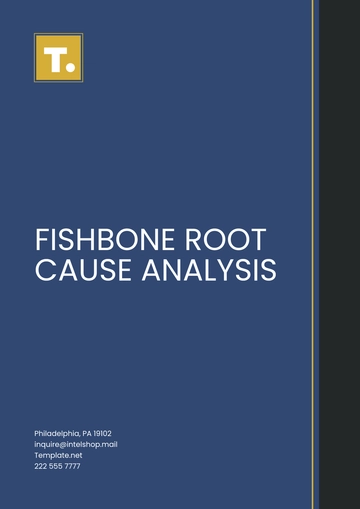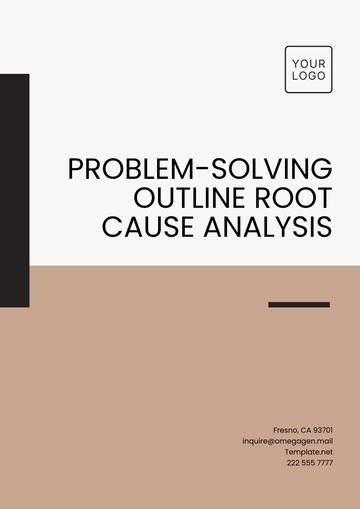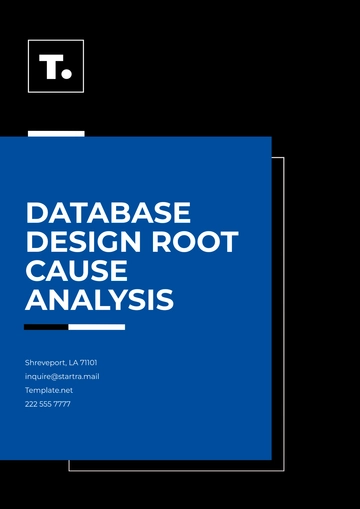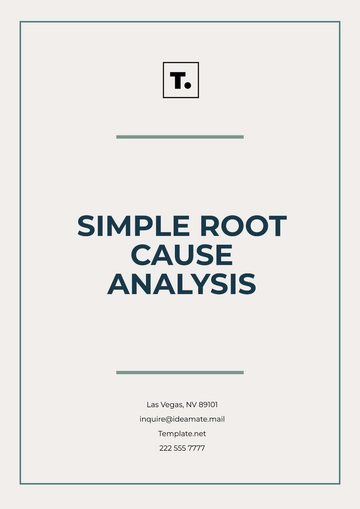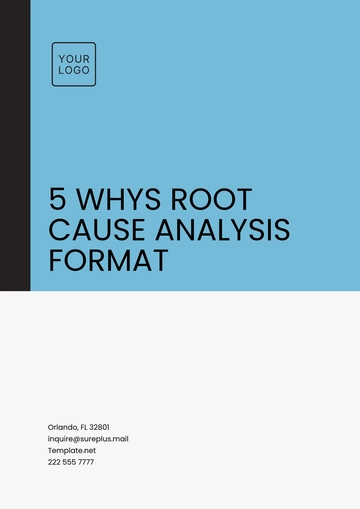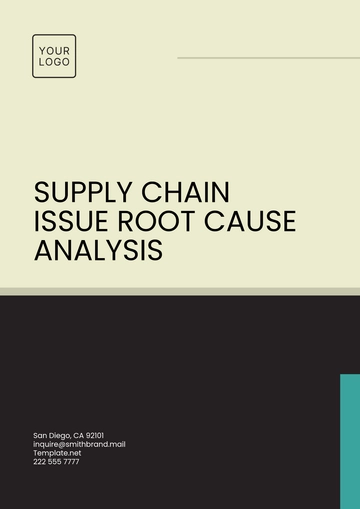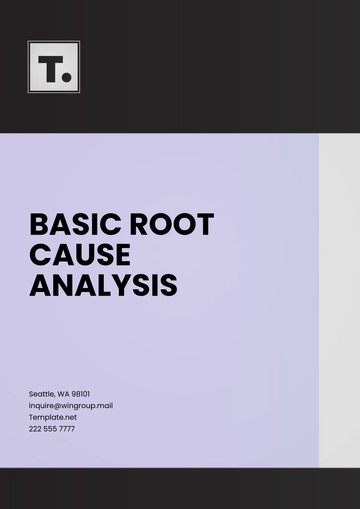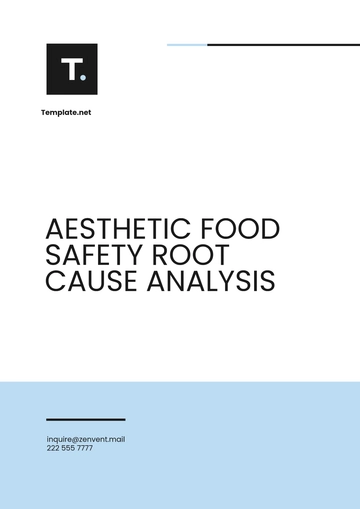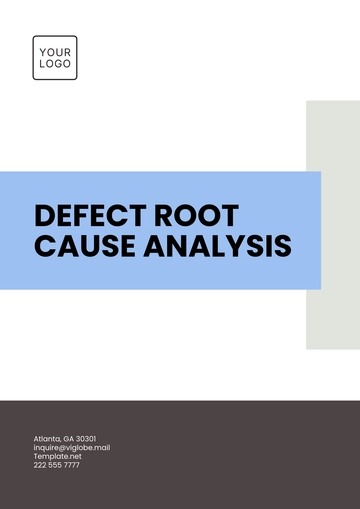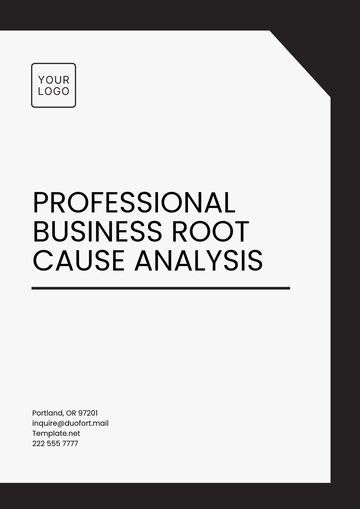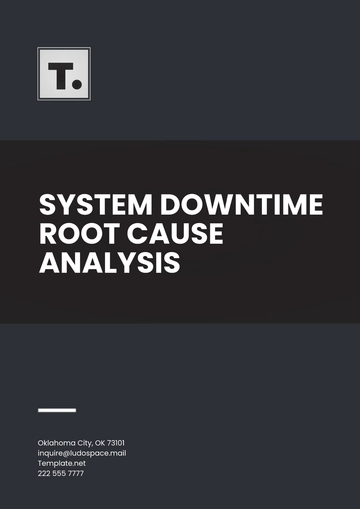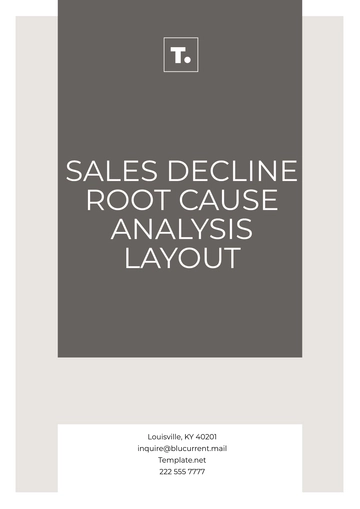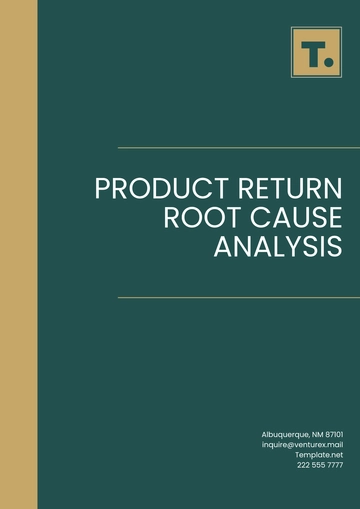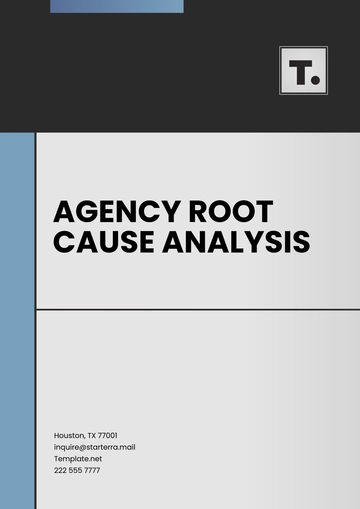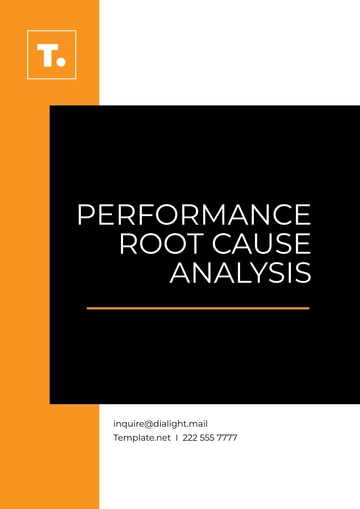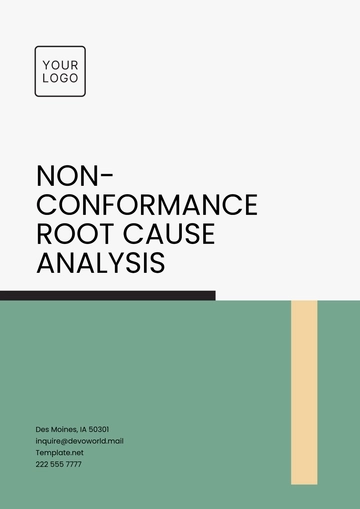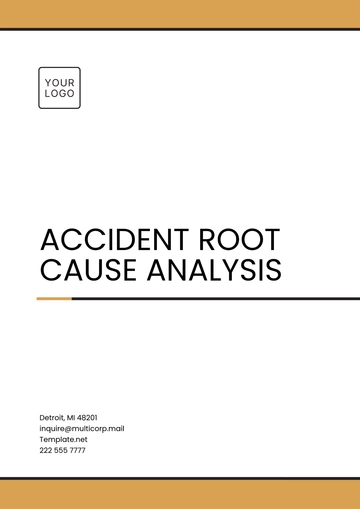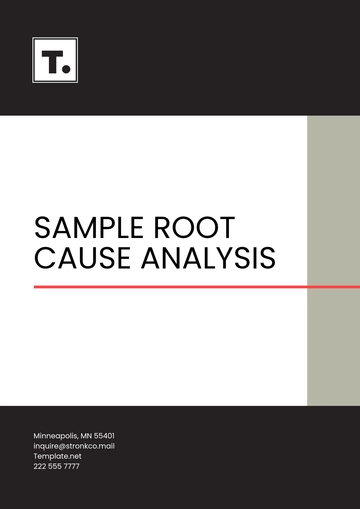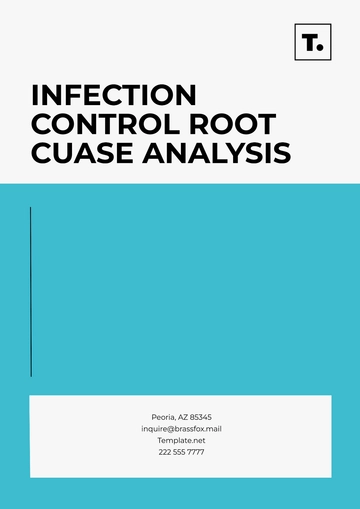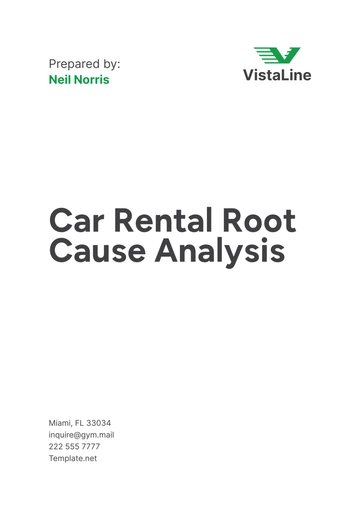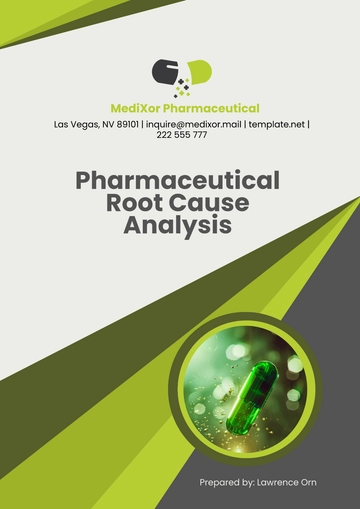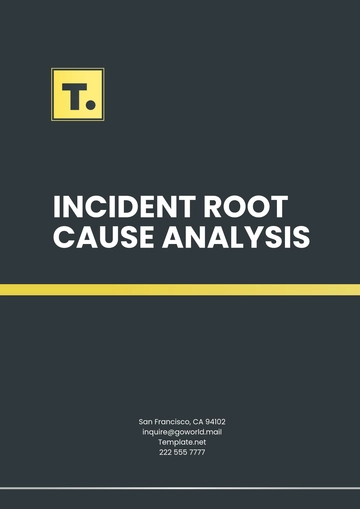Free Nursing Home Root Cause Analysis

I. Introduction
A. Purpose of the Root Cause Analysis (RCA)
The purpose of this Root Cause Analysis (RCA) is to thoroughly investigate the circumstances surrounding a medication error incident that occurred at [Nursing Home Name] on [Date]. The primary objective is to identify the underlying causes and contributing factors that led to the incident, with the ultimate goal of implementing corrective actions to prevent similar occurrences in the future.
By conducting this RCA, [Nursing Home Name] aims to enhance patient safety, improve medication administration processes, and foster a culture of continuous quality improvement. The insights gained from the analysis will inform evidence-based strategies to mitigate risks and strengthen medication management protocols.
B. Scope of the RCA
This RCA will encompass a comprehensive examination of the medication error incident, from the initial prescription to the administration of medication to the affected resident. It will scrutinize various aspects of the medication management system, including but not limited to, prescribing practices, medication storage and handling, staff training and competency, communication protocols, and organizational culture.
The scope of the analysis will extend beyond the immediate circumstances of the incident to identify systemic issues and underlying root causes that may have contributed to the error. By taking a holistic approach, the RCA will address both individual and systemic factors to implement sustainable corrective actions that promote safe and effective medication practices throughout [Nursing Home Name].
II. Incident Overview
A. Description of Medication Error Incident
On [Date], at approximately [Time], a medication error occurred at [Nursing Home Name] involving a resident, [Resident Name]. The resident, who was prescribed [Medication Name] for [Medical Condition], inadvertently received [Incorrect Medication] due to an error in the medication administration process.
The error was discovered [Duration] after administration when the resident began experiencing adverse effects. Prompt intervention by nursing staff and healthcare providers was initiated to address the resident's symptoms and stabilize their condition. Subsequent investigation revealed discrepancies in medication records and administration procedures, prompting further scrutiny of the incident.
B. Impact of Medication Error Incident
The medication error incident had far-reaching consequences, affecting multiple stakeholders within the nursing home:
a. Resident: [Resident Name] experienced physical discomfort and adverse reactions as a result of receiving the incorrect medication. The incident compromised the resident's well-being and necessitated additional medical attention to manage the adverse effects.
b. Family: Upon learning of the medication error, the family of [Resident Name] expressed distress and concern for their loved one's safety and care. The incident eroded trust in the nursing home's ability to provide competent and reliable healthcare services, leading to heightened anxiety and scrutiny.
c. Staff: The nursing staff involved in the medication error incident experienced emotional distress and professional scrutiny following the discovery of the error. The incident underscored the importance of adherence to established protocols and procedures for medication administration, prompting a reevaluation of staff training and competency assessment practices.
d. Nursing Home: [Nursing Home Name] faced significant reputational and legal implications as a result of the medication error incident. The incident highlighted gaps in medication management processes and quality assurance mechanisms, necessitating immediate remediation efforts and proactive risk mitigation strategies.
III. RCA Team and Methodology
A. RCA Team Composition
The RCA team consists of multidisciplinary members with expertise in various relevant areas. The team composition includes:
Role | Team Member Name | Expertise |
|---|---|---|
Team Leader | [Your Name] | Nursing administration |
Clinical Specialist | [Clinical Specialist Name] | Pharmacy, medication management |
Quality Improvement | [QI Specialist Name] | Quality improvement methodologies |
Nursing Staff | [Nurse Name] | Frontline experience in medication administration |
Risk Management | [Risk Manager Name] | Risk assessment and mitigation |
B. RCA Methodology
The RCA will follow a structured approach to systematically analyze the medication error incident. The methodology includes the following steps:
a. Data Collection: Gather relevant information, including incident reports, medication records, witness statements, and any other documentation related to the incident.
b. Timeline Development: Construct a chronological timeline of events leading up to and following the medication error incident to identify key milestones and decision points.
c. Cause and Effect Analysis: Utilize techniques such as fishbone diagrams or fault tree analysis to identify potential root causes and contributing factors associated with the incident.
d. Interviews and Observation: Conduct interviews with involved staff members, residents, and family members to gain insights into workflow processes, communication practices, and organizational culture.
e. Data Analysis: Analyze quantitative data, such as medication error rates and trends, to identify patterns or systemic issues contributing to medication errors within the nursing home.
f. Root Cause Identification: Synthesize findings from data collection, analysis, and stakeholder input to identify the primary root causes and contributing factors underlying the medication error incident.
IV. Root Cause Analysis Findings
A. Immediate Causes
The immediate causes of the medication error incident include:
a. Human Error: The administering nurse inadvertently selected and administered the incorrect medication due to confusion or distraction during the medication administration process.
b. Communication Breakdown: Inadequate communication between healthcare providers, such as unclear prescription orders or incomplete handover information, contributed to the administration of the wrong medication.
B. Contributing Factors
The contributing factors that exacerbated the immediate causes of the medication error incident include:
a. Workflow Issues: High workload and time pressures may have compromised the nurse's ability to verify medication orders and accurately administer medications.
b. Staff Training and Competency: Insufficient training or competency assessment in medication administration protocols and error prevention strategies may have contributed to the nurse's error.
c. Medication Labeling and Packaging: Poorly labeled or similar-looking medication packaging may have contributed to confusion and selection errors during medication administration.
C. Root Causes
The root causes underlying the medication error incident include:
a. Lack of Standardized Procedures: Inconsistent medication administration protocols and lack of standardized procedures for verifying medication orders contributed to the error.
b. Culture of Blame: A culture that emphasizes individual blame rather than systemic improvement may discourage staff from reporting errors or seeking assistance when faced with challenging situations.
V. Recommendations for Corrective Actions
A. Short-Term Corrective Actions
Immediate corrective actions to address the identified root causes and prevent recurrence of similar incidents in the short term include:
Action | Responsible Party | Timeline |
|---|---|---|
Conduct Immediate Staff Training | Nursing Education Director | Within 1 week |
Implement Double-Check Procedure for Medication Administration | Nursing Supervisors | Immediately |
Review and Revise Medication Labeling and Packaging Policies | Pharmacy Department | Within 2 days |
Enhance Communication Protocols for Medication Orders and Handovers | Nurse Managers | Within 3 days |
B. Long-Term Corrective Actions
Systemic changes and process improvements to address underlying issues and promote a culture of safety and quality care over the long term include:
Action | Responsible Party | Timeline |
|---|---|---|
Develop Standardized Medication Administration Protocols | Quality Improvement Team | Within 1 month |
Implement Electronic Medication Administration System | IT Department | Within 6 months |
Establish Medication Safety Committee for Ongoing Monitoring and Improvement | Nursing Home Leadership | Within 2 weeks |
Conduct Regular Medication Error Reporting and Analysis | Quality Improvement Team | Quarterly |
VI. Implementation Plan
A. Action Plan
The following action plan outlines specific steps required to implement the recommended corrective actions:
Action | Responsible Party | Timeline |
|---|---|---|
Conduct Immediate Staff Training | Nursing Education Director | Within 1 week |
Implement Double-Check Procedure for Medication Administration | Nursing Supervisors | Immediately |
Review and Revise Medication Labeling and Packaging Policies | Pharmacy Department | Within 2 days |
Enhance Communication Protocols for Medication Orders and Handovers | Nurse Managers | Within 3 days |
Develop Standardized Medication Administration Protocols | Quality Improvement Team | Within 1 month |
Implement Electronic Medication Administration System | IT Department | Within 6 months |
Establish Medication Safety Committee for Ongoing Monitoring and Improvement | Nursing Home Leadership | Within 2 weeks |
Conduct Regular Medication Error Reporting and Analysis | Quality Improvement Team | Quarterly |
B. Monitoring and Evaluation
A monitoring and evaluation plan will be established to assess the effectiveness of the corrective actions and their impact on preventing future incidents. Key performance indicators (KPIs) will be identified, and regular reviews will be conducted to track progress and make adjustments as needed. The Quality Improvement Team will be responsible for overseeing the monitoring and evaluation process and reporting findings to senior leadership.
VII. Conclusion
A. Summary of Findings
The Root Cause Analysis (RCA) conducted following the medication error incident at [Nursing Home Name] has yielded valuable insights into the underlying causes and contributing factors that led to the incident. Key findings include:
Finding |
|---|
Lack of standardized medication administration protocols |
Communication breakdowns in medication orders and handovers |
Insufficient staff training and competency in medication administration protocols |
Inadequate medication labeling and packaging policies |
Culture of blame and fear of reporting errors |
B. Commitment to Continuous Improvement
[Nursing Home Name] remains committed to continuous improvement in quality of care and patient safety. Moving forward, the nursing home will prioritize the implementation of corrective actions identified through the RCA process to prevent similar incidents from occurring in the future. By fostering a culture of transparency, accountability, and continuous learning, [Nursing Home Name] aims to uphold the highest standards of care for its residents and promote a safe and supportive environment for all stakeholders.
- 100% Customizable, free editor
- Access 1 Million+ Templates, photo’s & graphics
- Download or share as a template
- Click and replace photos, graphics, text, backgrounds
- Resize, crop, AI write & more
- Access advanced editor
Analyze and address root causes effectively with the Nursing Home Root Cause Analysis Template from Template.net. This editable and customizable template guides staff through the process of identifying underlying issues contributing to incidents or concerns in the nursing home. Tailor it effortlessly using our Ai Editor Tool for personalized analyses. Improve processes and enhance resident care with this essential template.
